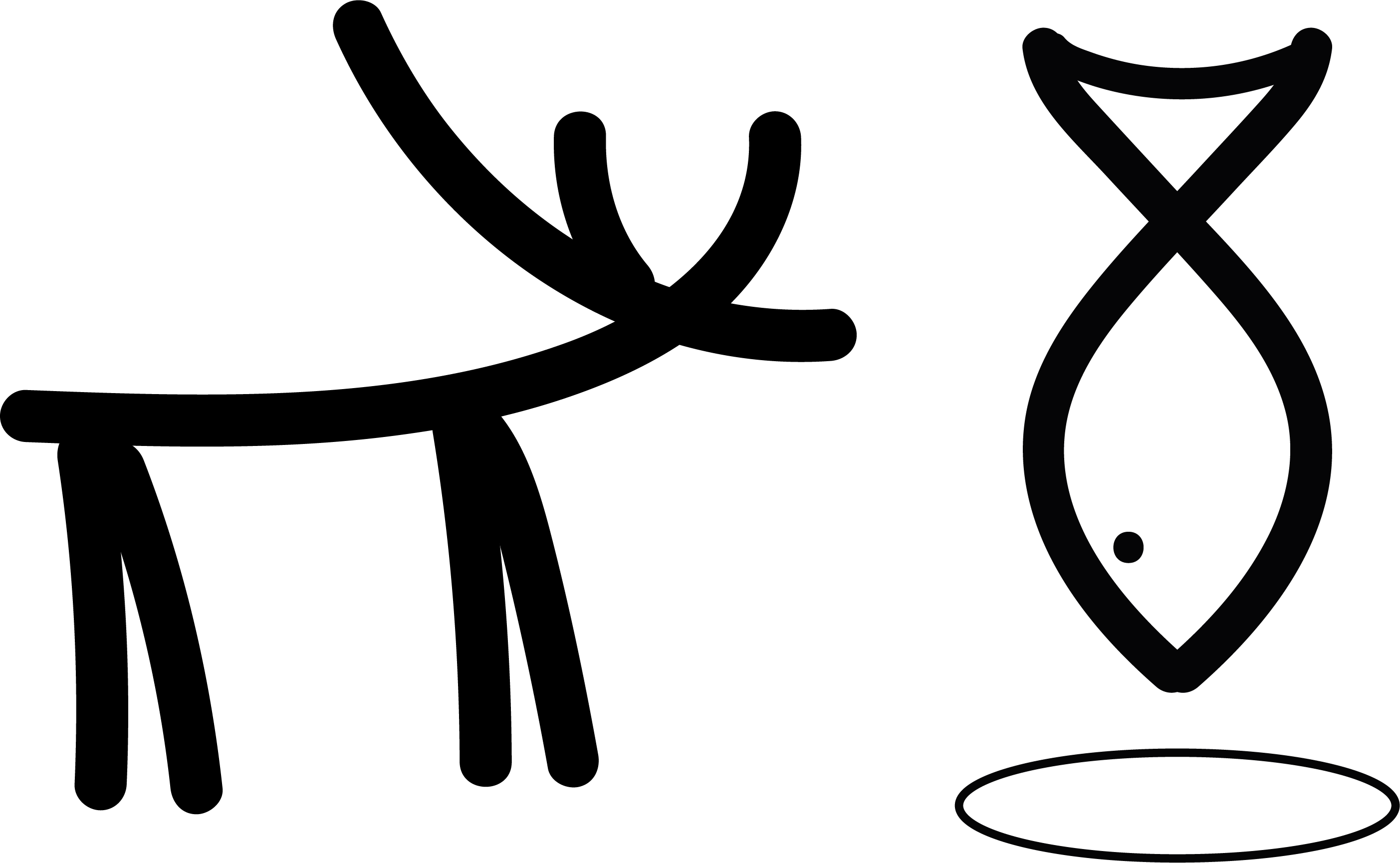Animal clues
To get a chance to see animals going about their daily business of feeding and wandering and finding a place to feel safe, you have to be very quiet and lucky—and usually be willing to spend a lot of time outdoors. The best photographers, hunters and herders spend many days living outside, following signs left by different animals to try and track them down.
No animal can hide completely (even those that fly have to stop and touch the earth’s surface sometime!)—and some of the clues different animals leave as they move around the forest include: footprints in the snow, marks on trees and the ground where they have been eating, poo! and the occasional bit of body hair or feather! If you’re a good tracker-of-animals you will be able to use these signs and work out how recently the animal was there and what it was doing! It’s a bit like being a detective, only for animals, not humans, and using your powers of observation to imagine what happened in this place where you see a disturbance or addition to the snow!
The tracks (or footprints) you are most likely to see in the forest here are going to come from blue hare, red fox (perhaps hunting the blue hare!), squirrel, reindeer, elk, willow grouse, black grouse and capercaillie. Some of these tracks are pictured here—can you spot any in the forest that look similar? You would be extremely lucky to encounter animal footprints and clues from lynx,, wolverines, or wolves. As bears hibernate between October/November and April, you’ll not be able to see any signs of them.. In the spring, professional animal trackers and biologists estimate the population numbers of different animals using a triangulation method in order to be able to set hunting quotas for elk, fowl (capercaillies, black grouse), lynx, wolverines, foxes and others.
If you’re more interested in poop than footprints (and let’s be honest, who isn’t?!), we’ve collected some samples in some jars for you to try and match up which poop goes with which animal. Have a look and see if you can work out which one belongs to blue hare, capercaillie, reindeer, elk and wood grouse. Remember to put the lid back on after you’ve finished inspecting!
ELK
Elk are shy creatures, and will retreat into the cover of the deep forest at the slightest sign of disturbance. They lope with a slow-motion gait that’s impressively graceful for an animal with such bulk. Males can weigh up to 700kg which is an impressive statistic when you consider that they survive the winter feeding on nothing more than the buds and bark of young trees. All this eating puts them into conflict with forestry owners because their grazing can damage large areas of newly planted trees and so destroy future tree crops. For this reason, forest owners like to rent their land out to local hunting clubs to help keep the elk population under control.
FOX
Red foxes do not hibernate and can withstand temperatures of -40°C thanks to their thick winter coat which grows thick and during autumn in preparation for the white winter months. They are small bodied and omnivorous, preferring to eat small mammals such as mice, eggs, carrion and berries. In the wintertime, they have a tendency to follow their own old footprints because these freeze hard after the fox initially compresses the snow, and by following these old trails, the fox saves energy by walking on a harder surface.
Occasionally, the fox can even snatch a young reindeer calf, especially if they are hunting as a two. While one distracts the reindeer mother the other snatches the newly born. Fox also like to take the advantage of capercaillie babies walking around on the ground unable to fly.
In Finland foxes have long been hunted for their pelts. They were held in such high regard for clothing and keeping warm purposes that two fox pelts were the equivalent of a month’s salary, or they could even be exchanged for a whole cow!
SQUIRREL
The red squirrel is found from Scandinavia south to Italy and Bulgaria, and from Ireland and Britain across to Russia. From there its range extends all the way to Mongolia, China, Korea and Hokkaido, the northernmost of Japan’s islands. The red squirrel lives both in conifer-dominated boreal forests and in broadleaved deciduous forests, particularly in western and southern Europe.
In this part of Finland, it was widely hunted for its furs, perhaps to make warm little shoes for babies or a winter scarf for the old ones who were feeling the cold. It was so important to the local people here that their skins were used as a currency during the 1900s. The word for money in Finnish, raha, originally meant dried animal skin. And back in the day, 100 skins could have got bought you a cow. In today’s currency, a single pelt back then would be worth 500 euros in today’s currency..





